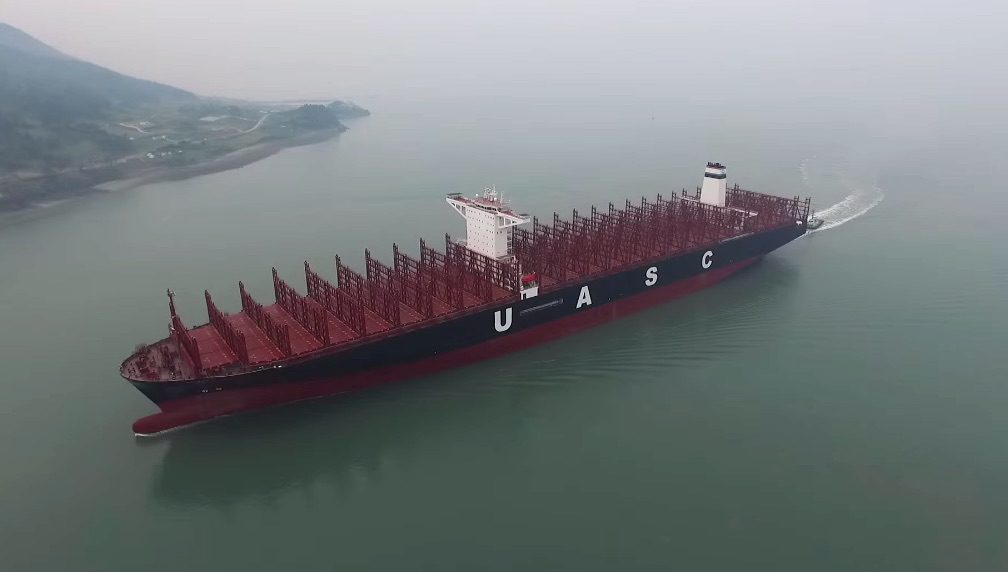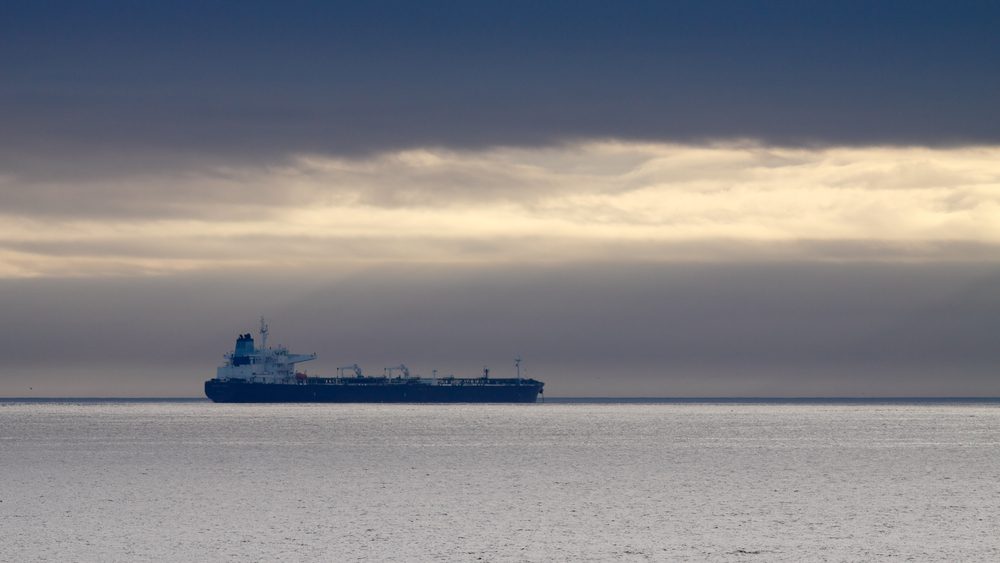UASC’s LNG-ready, ultra-large containership MV ‘Barzan’ was delivered in 2015 as the “world’s greenest containership”. Photo credit: UASC
By Mohammed Aly Sergie and Claudia Carpenter
(Bloomberg) — Shippers from A.P. Moeller-Maersk A/S to United Arab Shipping Co. are testing liquefied natural gas to power their vessels, curb pollution and create a new market for the cleaner-burning fuel.
Maersk, the biggest container-shipping line, agreed in February to work with Qatar Liquefied Gas Co. and Royal Dutch Shell Plc to develop LNG as a maritime fuel. United Arab Shipping signed a similar accord with Shell and Qatargas, as the Qatari company is known, on April 17, having invested $2.3 billion in LNG-capable ships since 2014.
Finding new customers in an oversupplied market is a priority for Qatar, source of almost a third of the world’s LNG, and Shell, the largest LNG-trading company. Total annual capacity of LNG producers is set to surge 45 percent to 423 million metric tons by 2025, with supply exceeding demand for at least seven years, financial adviser Sanford C. Bernstein & Co. estimates. Shippers are showing interest as the UN’s International Maritime Organization tightens limits on sulfur.
“LNG on a worldwide scale in shipping is something that could happen in the next two years,” Jorn Hinge, United Arab Shipping’s chief executive officer, said in a phone interview. “Right now there are ships operating within certain eco-zones, mainly in Europe and the U.S., using LNG, but on a worldwide basis a system doesn’t exist yet.”
Fivefold Growth
LNG for shipping is still in its infancy. Most of the maritime industry relies on oil-based products, and Bernstein forecasts that ships will account for 2.5 percent of global LNG use by the end of the decade.
Out of a global fleet of at least 50,000 ships, 77 LNG-powered vessels are in operation and 85 more are on order, said Martin Wold, a senior environmental consultant at Norway-based DNV GL, which certifies ships for safety. The fleet will grow to five times its current size to 360 ships by 2020, according to Bernstein.
New regulations are driving the growth. The United Nations’ maritime organization plans by January 2020 to impose a worldwide ban on fuel with a sulfur content of more than 0.5 percent. Most ships currently burn bunker fuel, a tar-like residue from the refining of crude oil that can contain as much as 3 percent sulfur, Hinge said.
“We were aware the environmental regulations were coming,” he said. “It made sense for us to plan our $2.3 billion new building and get involved in such initiatives and projects.” United Arab Shipping, based in Dubai, is the largest container line in the Middle East, according to its website.
Fueling Stations
A dearth of LNG-fueling stations and tight supply of liquefied gas until 2014 limited its popularity for ships. Northern Europe and parts of the U.S. have some fueling infrastructure in place, and projects to supply the fuel in Rotterdam, Singapore and China are in development. The United Arab Emirates is also looking at options to provide LNG as marine fuel. LNG prices peaked in 2014 and have dropped 80 percent since as new supplies come on stream from projects in Australia and the U.S.
“The business case has not been strong enough for many ship owners to make the investment,” DNV’s Wold said by phone from Høvik, Norway. “Many of them will now think twice about their choices in the future when they see this movement into LNG fuel.”
Building Confidence
Qatargas, Shell and Maersk are focusing for now mainly on selecting sites for filling stations in the Middle East. A 7.8 million ton-per-year plant owned jointly by Qatargas and Shell will supply LNG, and the three companies plan to deliver the fuel to commercial vessels by 2020.
“People have to have the belief that the infrastructure is actually building out,” Lauran Wetemans, general manager of Shell’s downstream LNG business, said from The Hague. Maersk declined to provide details about its partnership, while Qatargas didn’t respond to multiple requests for comment.
The maritime industry used about 70,000 tons of LNG in 2013. Demand is expected to grow to 10 million tons by 2020, just a fraction of the 372 million tons of bunker fuel used in 2013, according to Bernstein. Ships making the shift include car and passenger ferries, support vessels for offshore oil and gas fields, and container ships, according to DNV.
“Qatar is in a position to make LNG happen on a global scale,” Shell’s Wetemans said. “Bringing Maersk to the table, bringing Shell to the table, you really have people that can make things happen.”
© 2016 Bloomberg L.P

 Join The Club
Join The Club











